- News
- Reviews
- Bikes
- Components
- Bar tape & grips
- Bottom brackets
- Brake & gear cables
- Brake & STI levers
- Brake pads & spares
- Brakes
- Cassettes & freewheels
- Chains
- Chainsets & chainrings
- Derailleurs - front
- Derailleurs - rear
- Forks
- Gear levers & shifters
- Groupsets
- Handlebars & extensions
- Headsets
- Hubs
- Inner tubes
- Pedals
- Quick releases & skewers
- Saddles
- Seatposts
- Stems
- Wheels
- Tyres
- Tubeless valves
- Accessories
- Accessories - misc
- Computer mounts
- Bags
- Bar ends
- Bike bags & cases
- Bottle cages
- Bottles
- Cameras
- Car racks
- Child seats
- Computers
- Glasses
- GPS units
- Helmets
- Lights - front
- Lights - rear
- Lights - sets
- Locks
- Mirrors
- Mudguards
- Racks
- Pumps & CO2 inflators
- Puncture kits
- Reflectives
- Smart watches
- Stands and racks
- Trailers
- Clothing
- Health, fitness and nutrition
- Tools and workshop
- Miscellaneous
- Buyers Guides
- Features
- Forum
- Recommends
- Podcast
TECH NEWS
Giant launch all-new Defy range with disc brakes
Giant have massively overhauled their best-selling Defy endurance road bike for 2015. While the aluminium models use regular caliper rim brakes, the new carbon frame is disc-only across the range with a lighter sub-900g frame (size medium) that Giant says is stiffer and more compliant than not just the previous Defy, but most of the its competitors in the endurance sector.
The new Defy retains the tried-and-tested geometry of the previous Defy however, which is sensible because the geometry was one of the reasons the Defy was so well received.
“The only thing we kept was the geometry, everything else is brand new,” says Giant's Global On-Road Category Manager Jon Swanson.
Disc brakes commitment
The headline news from the launch is that the carbon Defy is only available with disc brakes. Unless you've had your head in the sand the past couple of years, you'll know that disc brakes on road bikes are a Big Thing right now. Giant felt putting disc brakes on the Defy was a natural evolution based on the type of person buying the bike and the style of riding they're doing.
Making the new Defy disc-only for the carbon version might seem a brave commitment but Giant felt the timing was right for the wholesale switch to disc brakes.
“It's pretty bold, but everybody is going there, and we just made the decision, if you're going to do it, do it,” Jon Swanson tells us. “It wouldn't make sense to make a frame for both, because then you've got this halfway bike that doesn't really do what you need it to do. You're paying a penalty somewhere. So we committed all carbon bikes to disc-only.”
The aluminium Defy gets regular caliper rim brakes. You'll notice that the Defy uses conventional quick release axles and not a bolt-thru system. There's a lot of debate about whether disc road bikes should be using thru-axle technology borrowed from the mountain bike world, and we're seeing new bikes all the time with one or the other, and sometimes a combination of both.
Despite having put a 15mm bolt-thru axle on the front of their new TCX cyclo-cross bike last year, Giant felt compelled to stick with regular quick release axles on the new Defy. Jon Swanson told us the reason they're using regular quick release axles is because they're not convinced there is a suitable road bolt-thru standard available yet, and also points to the much wider availability of disc-compatible wheelsets with quick release axles.
“The current industry accepted versions of thru-axle, in my opinion, are completely overbuilt for road,” he says. “They do work in cross, because cross bikes are basically rigid 29er mountain bike hardtails. They do lend some stiffness and attributes to the cyclo-cross world. But on the road, I don't think they're there yet.
“I think there's a couple of key factors: they're overbuilt, there's no true quick release option globally available yet, and the other problem is wheels. We could have used thru-axles but then you're locked into one wheelset, so I'm not cool putting people into a system where they feel locked in.”
With this commitment to quick release axles it appears Giant are going to wait and see which way the industry and the market moves with regards the development and take-up of bolt-thru axle technology. Swanson makes a valid point about wheel availability. The likes of Zipp, Reynolds, Enve all currently offer versions of their wheels with disc-compatible hubs, but those companies don't currently offer any bolt-thru versions. But still, we're sure some people will be disappointed.
Improved compliance
Aside from disc brakes, the one big change to the Defy range has been the drive to improve the amount of compliance compared to the old model.
Giant have worked on making it more comfortable but have stayed clear of adding gimmicks and instead focused on, in their words, “engineered compliance". So they've scrapped the old Vector integrated seatmast, an aero shaped tube that also featured on the TCR race bike, and incorporated the D-Fuse seatmast that first debuted on the TCX cyclo-cross bike.
“One of the biggest differences you'll see between this new version and the old Defy is the seat tube profile,” says Jon Swanson. “The Vector ISP [integraged seatpost] has gone. And what we did is start working on the D-Fuse post last year when we did the TCX cyclo-cross bike. We wanted to prove its effectiveness in cross, and now we’re launching it on the Defy.”
Along with the D-Fuse post Giant have also used seatstays that are as small as they can make them while still being hollow. The way the tubes are shaped and mounted is also important. They taper to a square profile at the dropouts and they get much thinner towards the seat tube.
Giant have also reduced the angle of the seatstays, terminating them lower down the seat tube, which they reckon helps dissipate vibrations over a larger area. The top tube has a similar D-shaped profile to the D-Fuse seatmast as well. The top tube is basically a D-Fuse seatmast, according to Jon Swanson. It's flat at the top, rounded at the bottom.
There's no industry standard test for measuring deflection, but Giant have conducted some independent tests in a laboratory in Taiwan that does a lot of automotive testing. The frameset was put in a jig, with a 50kg weight at the bottom bracket, and then they ran a high frequency test and a low frequency test. They quote in the region of 12mm of movement showing that Giant measured well against its main competitors (there's more on frame stiffness below).
“We got there without gimmicks, no rubber bumpers, no pivot in the the top tube, no split seat tube, none of that stuff,” says Jon Swanson. “It's a pure engineering piece and we ended up in the same place as our very highly regarded competition. And we did that with a frame that's anywhere up to 200 or 300g lighter than everybody else, and we're stiffer than everybody else.”
Giant say they didn't have a set goal when they started redesigning the Defy, they were focused on ride quality, which Jon Swanson describes as the feeling, “When you’re riding down the road and you go onto the white line, everything gets quiet. That was the goal for the bike. It wasn't about having X amount of movement, this or that, it was about the overall ride quality. I wanted the bike to be quiet. Just to smooth itself out.”
Compared to the old Defy, Jon Swanson describes the new bike as a huge step forward: “It blows it out of the water, it's not even close.”
Integrated seatmasts have their detractors, but when asked if they're using one on the new Defy because it's a signature marketing feature or purely from an engineering standpoint, Jon Swanson assured us it was the latter. He says they didn't even consider a regular seatpost from the beginning of the redesign, favouring the integrated design because it allows them vastly more control over the amount of deflection they can tune into the frame. He further explained that Giant spent a lot of time getting the 'tune' of the carbon layup and profile of the seatmast to offer the desired amount of deflection to provide the balanced ride they were seeking for the bike. The seatmast has been tuned for each frame size.
The fork features thinner legs and an increased crown size with a noticeable taper, to increase lateral stiffness yet offer more compliance. Managing the degree of compliance and stiffness offered by the new fork and the rear end of the frame was a critical element of the project to provide the desired ride characteristic.
“We tried to balance front and rear,” says Jon Swanson. “We didn't want to have a bike that was really compliant in the rear but the front was super stiff. The front is a lot harder to work on, it was really tricky getting the balance we ended up achieving.”
Stiffer and lighter frame
As well as improving the compliance, Giant also worked on increasing the stiffness. The Defy gets Giant's OverDrive 2 tapered head tube (1 1/4in - 1 1/2in), PowerCore 85.6mm wide bottom bracket and MegaDrive down tube - features used on other Giant models.
Giant claim the Defy has more lateral frame and bottom bracket stiffness than other bikes in this class, including the Cannondale Synapse Hi-Mod Disc, Specialized S-Works Roubaix SL4 Disc and Trek Domane 6 Disc. They tell us the frame stiffness is 140.87 N/mm (Newtons per millimetre) and bottom bracket stiffness is 70.63 N/mm. That last figure puts the Defy in the same ballpark as their Propel aero race bike, so it's clearly a performance-orientated bike.
It's lighter too. In designing the carbon frame with disc brakes only, Giant were able to reduce the weight compared to the old Defy, and claim a size medium (55cm) is 890g, which is in the region of 50g lighter than the previous model. That's with the integrated seatmast, and compares very favourably with disc-equipped endurance frames from other manufacturers. Giant reckon a frameset weight (including fork with uncut steerer, seatpost and clamp, headset and all other hardware) is between 250-350g lighter than comparable rivals.
“Weight was a big issue,” Jon Swanson tells us. “Looking around to what we consider relevant competitors, when everybody starts putting disc brakes on a bike, they're adding weight: 40, 50 60, 80g to a frameset. That's a significant weight added in. Our goal for this bike was to have a net zero increase over the current SL frameset. That was our goal.
“What actually ended up happening was we dropped 40 or 50g out of it when we went to disc brakes. Part of the reason we were able to drop while others were adding was that we started from zero. All we basically had was a stick drawing of geometry, and we went from there. What's happening with a lot of competitors is they're adding disc tabs to existing frames.
“So starting from zero gave us a big advantage right away. The other thing we did was start looking at the small details. Where do the cables go? Where do they come out? When you start punching holes in carbon, you're adding weight to the bike, because you have to reinforce the hole. That reinforcing material is more than what you've actually taken out for the hole. So you look at the cable entry on the head tube on the current bike; it's one on either side. What we did is get rid of the one on the driveside, and made the other one a little bigger, and ran both cables through there. That actually saved us about 10g.”
Such attention to detail and the addition of hollow carbon dropouts helped to bring the weight down. On the new fork the lower disc mounting tab comes directly off the back of the dropout, and it's all moulded as one piece. A moulded insert sits inside providing the threads. The Defy is constructed from Giant's own Advanced SL composite carbon.
The Defy range highights
Giant will offer a range of Defy carbon models. The one pictured here is the top-end Defy Advanced SL with a Shimano Ultegra Di2 groupset with hydraulic disc brakes, 140mm TRP rotors on Zipp 202 wheels, Giant 25mm tyres and Giant carbon bars and stem, and a Fizik Aliante saddle.
They'll also produce this Defy Advanced which drops the integrated seatmast for a D-Fuse seatpost and features a Shimano Ultegra mechanical groupset with TRP Spyre disc brakes.
They'll be doing a model with the new Shimano 105 mechanical/hydraulic disc groupset too.
I spent a couple of days riding the new Defy around Pitlochry, Scotland so look out for my First Ride impressions on road.cc shortly. The new Defy is expected to be available in August and we'll have full pricing and model details soon.
David worked on the road.cc tech team from 2012-2020. Previously he was editor of Bikemagic.com and before that staff writer at RCUK. He's a seasoned cyclist of all disciplines, from road to mountain biking, touring to cyclo-cross, he only wishes he had time to ride them all. He's mildly competitive, though he'll never admit it, and is a frequent road racer but is too lazy to do really well. He currently resides in the Cotswolds, and you can now find him over on his own YouTube channel David Arthur - Just Ride Bikes.
Latest Comments
- eburtthebike 44 min 53 sec ago
"......disgruntled residents continuing their protests by chaining bicycles the trees,..."...
- Secret_squirrel 51 min 26 sec ago
All competing for a role in a group that has been accused of being involved in massive corruption in the past. Hmm.
- Cycle Happy 1 hour 23 min ago
I've found the Chilli-Tech rear camera /light combo to be very good. ...
- quiff 1 hour 55 min ago
I was intrigued as to what, if any, connection the term has to Mongolia. According to, ahem, Wikipedia, Down himself (namesake of the syndrome)...
- Davisian 2 hours 33 min ago
I don't know why this is in the news, the Merseyside area is peppered with crossings that work like this and have done for decades. Maybe we don't...
- stonojnr 2 hours 44 min ago
at Man Utd its more about managing the bags of wind who used to play the game but now endlessly criticise from the comfy pundit sofa, than anyone...
- wtjs 3 hours 48 min ago
The cyclist told road.cc that he has not reported the near miss to the City of London Police because “what’s the point? They’re not interested...
- chrisonabike 4 hours 5 min ago
Never mind all that now - do people have any opinion on pet-cycling-safety?...
- chrisonabike 5 hours 5 min ago
That's clearly far too large a vehicle to transport pets in urban areas. What about a Ram (perhaps more suited to country types though)?
- Tom_r_k 5 hours 12 min ago
Brilliant to see a company showing some love to rim brakes. I have been tempted to get some soon so may support a company offering fresh updates...


































































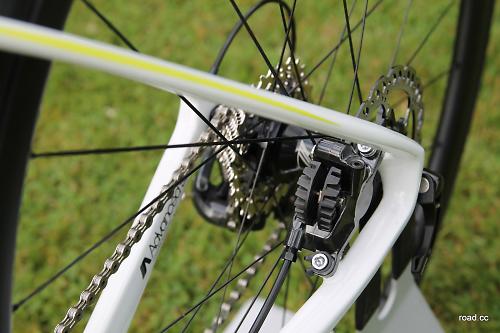

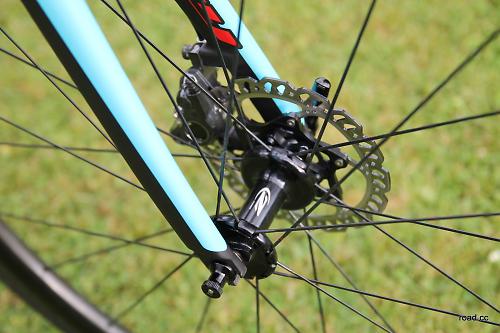
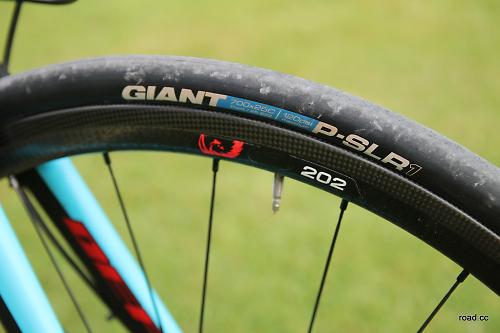
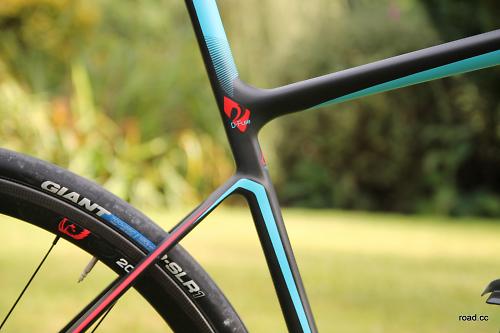
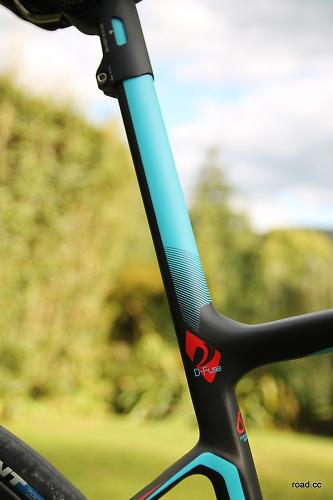
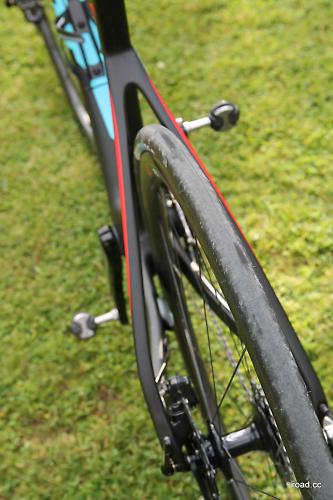
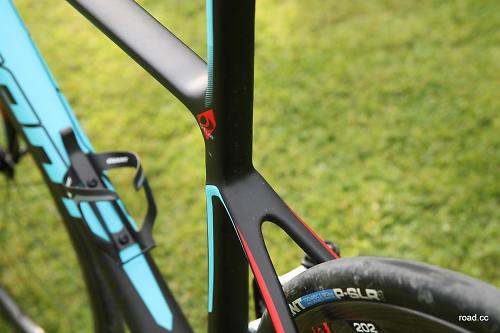
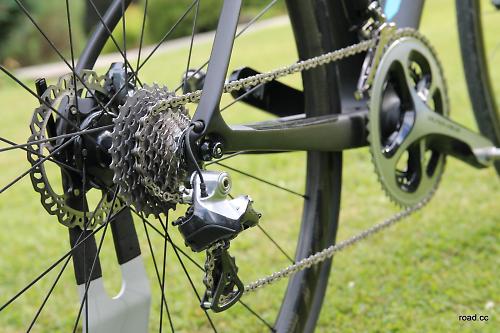
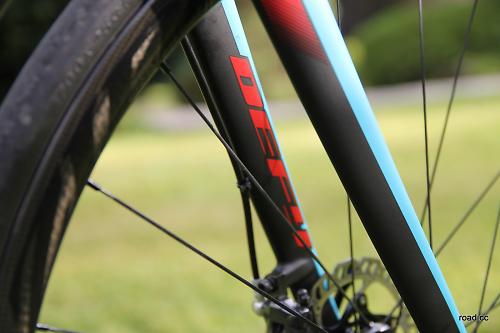
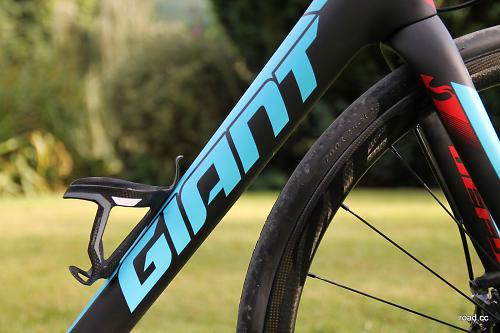
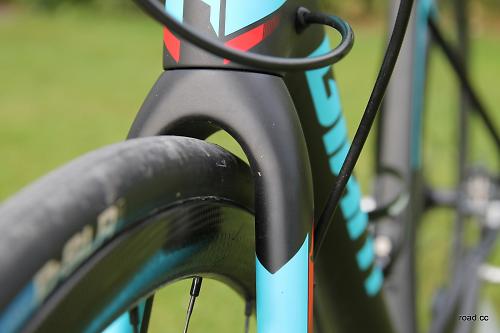
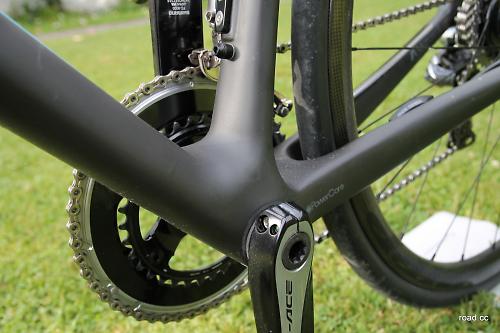
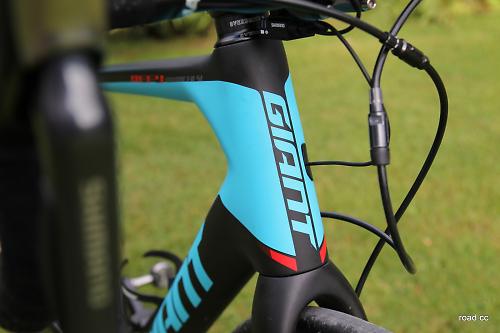
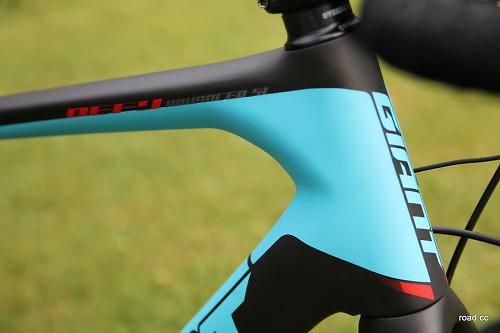

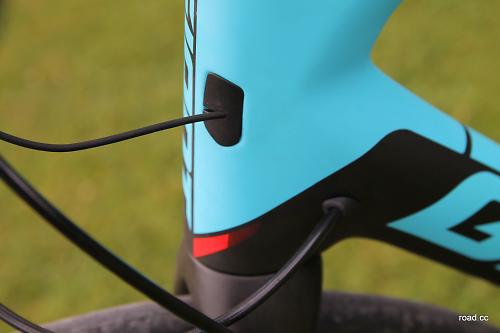
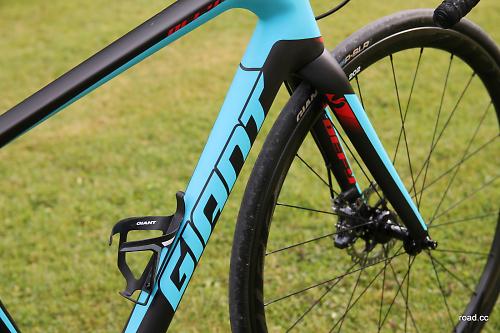
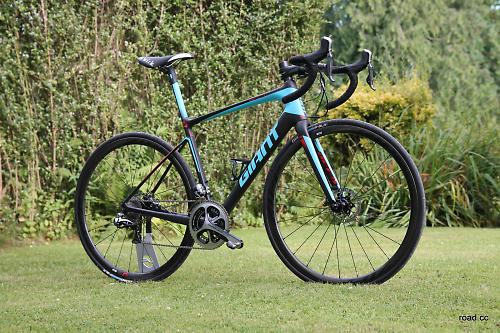
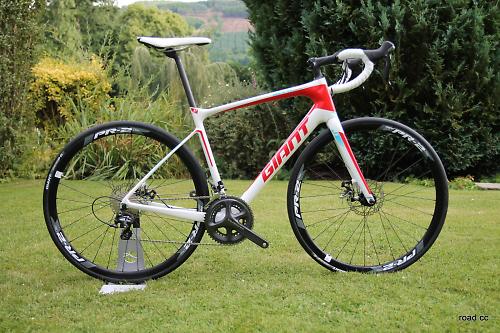
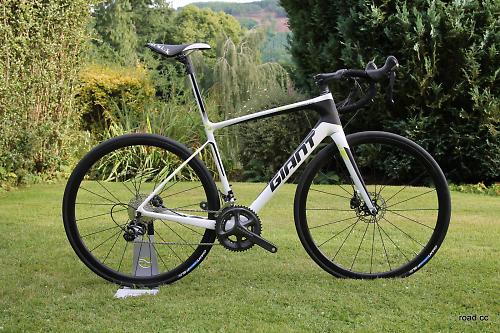
Add new comment
16 comments
Really like the look of these - could be great as a year-round UK bike. But - any idea if you could fit mudguards? Doesn't appear to have mounts and without a brake bridge I guess Raceblades wouldn't work?
Graphically I think they look pretty smart, but geometry wise I just cannot get away with that ultra compact look. Add into that an integrated seat mast and it just looks so weird to me. The cannondale caad10 disc in my opinion looks a lot better proportioned. On a side note is blue the new black?
Hopefully the new red; I'm soooo bored of black and red bikes.
I would be very surprised if the UCI doesn't ratify road discs later this year. A) Because they are safer, and B) Because whilst they may give the impression of being in charge, we all know it's actually Shimano that decides these things...
I'm just not keen. I prefer a seat post and normal triangles. I think the fact that Giant is going for disks means it cant be long before the UCI say its ok.
What will the Giant sponsored riders use in the classics where they have often gone for the Defy? Discs not yet UCI legal so probably have to use this year's models.
@choko
the seat mast is cut to fit the rider after bike fitting / sizing
a selection of insert shims is also provided to allow height extension to the cut mast, and a taller saddle head is also available to allow further extension if the bike is sold to a taller rider
the bike comes with the cutting guide, shims and standard saddle head, its pretty sorted - advice from Giant is to use 32tpi HSS hacksaw blade and not carbon specific hacksaw blade as you'd assume
Awesome! I ride the current Defy Advanced 2 and can't imagine how an endurance frame could feel much better so can't wait to read how this new one rides. Looks like a pretty unbeatable combo if they can get it anywhere near the current price point...
I picked up my Defy Advanced 2 disc brake model this morning and couldn't be more pleased - it's fantastic!
They look ace, and seems like an obvious move for the Defy range. But if I were in the market for a disc-equipped road bike at the moment I'd maybe be waiting to see which way the QR/thru-axle thing goes.
FWIW as a non-racer and an owner of a thru-axle equipped MTB I think they're a good thing.
Giant is not an American manufacturer they are a Taiwanese company based in Taipei. They make frames for most if the big companies as well as their own.
One of these bikes will be mine..probably the mechanical Ultegra.
Looks nice, it will go onto my 2015 n+1 shortlist despite my aversion to big American manufacturers.
But I don't really understand how these seatmasts work... it doesn't look like there is more than a few inches of saddle height adjustability, unless there's some trick I'm missing? Is it a case of "buy the exact right size or so help you God"?
Oh wow - thats a great looking bike. Want!
This ticks a lot of boxes & current Defy has a great rep. Two things would put me off discs on the road at the moment though:
a) very limited wheel choice if you don't like what it comes with (generally likely as most stock wheels are poor) &
b) the similarly limited options with disc brake systems (hydraulic -good but expensive and only few sorts available) or cable op (cheaper, but all seem to be flawed in some way).
Think I'll be sticking with rim brakes until the wheel and brake manufacturers address this...
That SL would be a great all year round bike. Looking forward to the review.
That looks delicious!